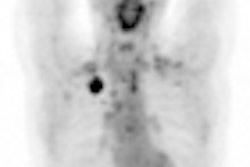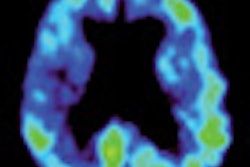British researchers are using PET/CT to select children with primary refractory or relapsed high-risk neuroblastoma for treatment with a molecular radiotherapy known as lutetium-177 (Lu-177) DOTATATE, according to a study published in the Journal of Nuclear Medicine (July 2011, Vol. 52:7:1041-1047).
Neuroblastoma, a cancerous tumor that develops from nerve tissue in infants and children, accounts for 6% to 10% of all childhood cancers. The cancer does not always follow the same pattern, however, and some patients can regress or progress spontaneously, despite aggressive therapy. The long-term survival rate for neuroblastoma is less than 40%.
The study from University College London Hospitals NHS Foundation Trust imaged eight children who had relapsed or primary refractory neuroblastoma with a gallium-68 (Ga-68) DOTATATE PET/CT scan. If the disease sites showed Ga-68 DOTATATE uptake greater than the liver, the child was considered eligible for the molecular radiotherapy. Therapy with Lu-177 DOTATATE was determined to be suitable for six of the children and was administered appropriately, according to a statement about the study from the Society of Nuclear Medicine (SNM).
After completing treatment with Lu-177 DOTATATE, five children had stable disease by the response evaluation criteria in solid tumors. The treatment was feasible, practical, and well-tolerated in the small group of patients with high-risk neuroblastoma and, as a result, researchers plan to evaluate Lu-177 DOTATATE formally in a phase I/II clinical trial to evaluate toxicity and response, according to SNM.
Study co-author Jamshed Bomanji, PhD, said that molecular imaging has contributed a new diagnostic technique to map the full extent of disease, adding that the treatment has great potential for children whose treatment options are limited, because neuroblastoma often becomes resistant to chemotherapy and success is limited by poor bone marrow reserve.



















